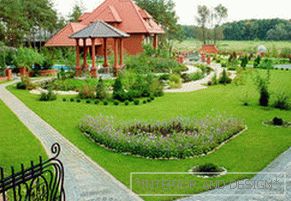Valencia Santiago Calatrava (Santiago Calatrava) - an amazing architect. Nobody criticizes his work, his colleagues admire him, the public, who are far from architecture, adores his buildings. Today, the 67-year-old architect Santiago Calatrava (p. 28.07. 1951) is famous throughout the world. Wherever he does not build snow-white openwork buildings-mirages, glorifying his native Spain - in Canada, China, USA, Switzerland, Venice and so on.
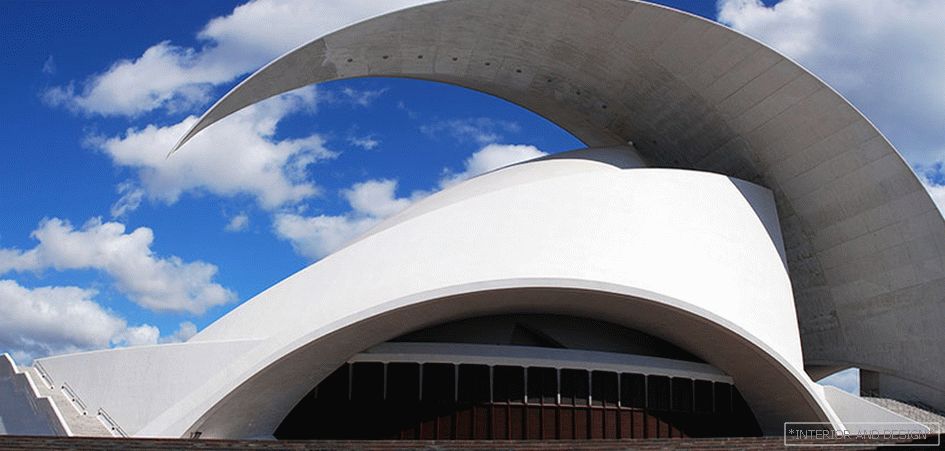 A masterpiece of modern architecture - the Auditorio de Tenerife Opera House (Auditorio de Tenerife) is one of the most famous buildings in Spain and attractions of the Canary Islands. 2003
A masterpiece of modern architecture - the Auditorio de Tenerife Opera House (Auditorio de Tenerife) is one of the most famous buildings in Spain and attractions of the Canary Islands. 2003 Calatrava was born under a lucky star: almost all his creative life from the late 1970s to the 2010s, he builds, as he sees, and his work is in demand and highly appreciated. He studied painting, drawing and architecture in his native Valencia, then received a serious engineering education in Zurich. There he began his own architectural practice, and so far in Switzerland his buildings have been realized more than anywhere else.
 Denver Bridge Project, part of the South Terminal Redevelopment Program for Denver International Airport (DIA). 2016
Denver Bridge Project, part of the South Terminal Redevelopment Program for Denver International Airport (DIA). 2016 Calatrava designed a lot for America. Milwaukee is proud of the grand pavilion of the Museum of Art with drop-down sunflowers, New York - a transfer station on the Ground Zero, the platform was created on the site of the tragically destroyed towers of the World Trade Center. Chicago - the giant white "drill" Chicago Spire. The skyscraper height of 610 meters is recognized as the highest residential building in the United States.
Americans not only love Calatrava, they arrange museum exhibitions for him and intensely reflect on his work. Each time they compare Calatrava with Frank Gehry. Both architects produce very spectacular forms that have a strong effect. But Gehry with his twisted titanium ribbons is busy with the “skin” of the building, its shell. While Calatrava is focused on the "skeleton". The ribs, joints and tendons of his designs are incredibly artistic.
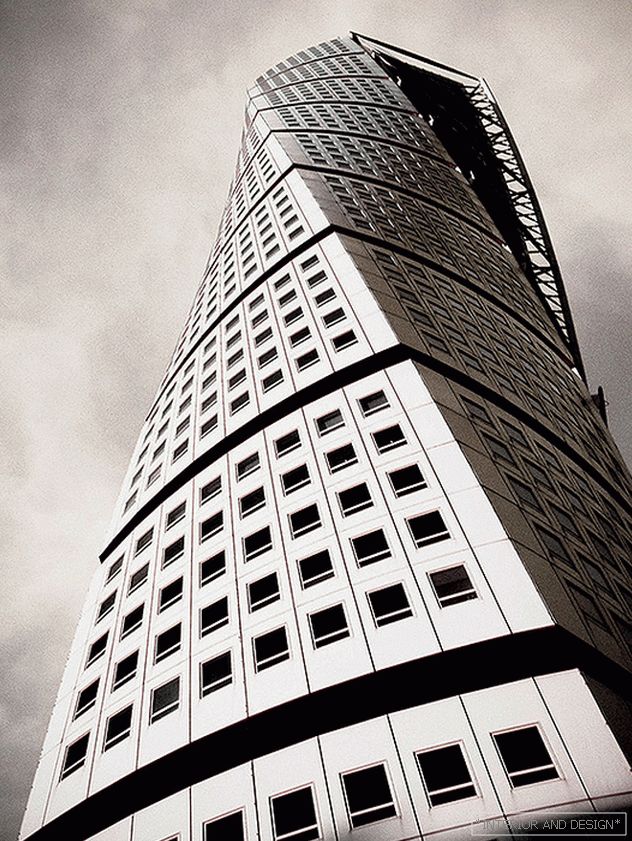 Skyscraper "Turning Torso", Malmo, Sweden. 1999–2004.
Skyscraper "Turning Torso", Malmo, Sweden. 1999–2004. The baroque theater architect, as many researchers call him, the master does not limit himself to engineering needs, no “form follows function” in Calatrava’s opuses you will not find a day with fire. Ever since his student years, the main laboratory for developing the form was for him a drawing of nude nature. This is his know-how - to investigate the anatomy, to watch how all the "mechanisms" of the human body in motion work and to transfer the observations to the architectural volume. The building, which students of architectural schools from all over the world are watching, is a skyscraper in the Swedish city of Malmo, which is called “The turning torso”.
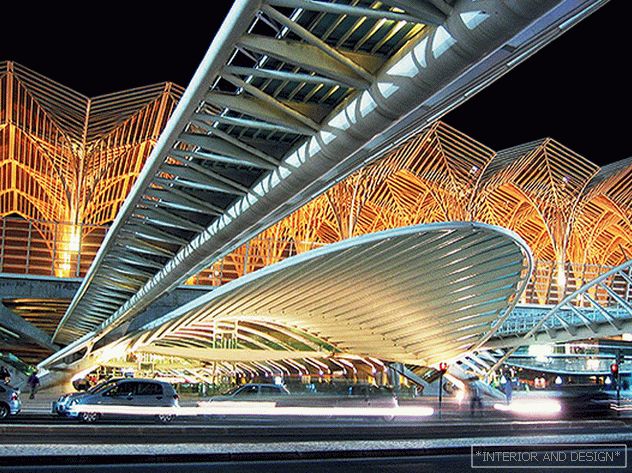 East Station in Lisbon, Portugal. 1993–1998.
East Station in Lisbon, Portugal. 1993–1998. In the archives of Santiago Calatrava hundreds of watercolor paintings depicting figures on their knees, somersaulting athletes and curving beauties. Another characteristic element is the wing. Flying wing bridges, built at different times in Buenos Aires, Barcelona, Seville, Bilbao, is a special theme for the architect. Clouds shine through light openwork designs. Bridges, like almost all buildings of Calatrava, are white in color and make you look to the sky. The optimal position of its buildings is above the water. Calatrava soars above the bustle of the city in a dialogue with the universe.
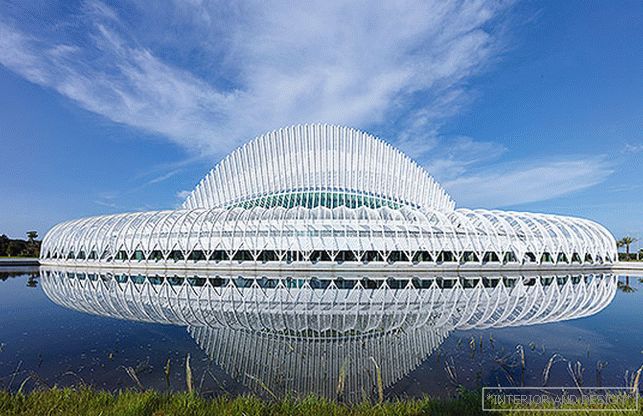 Polytechnic University, campus center for innovation, science and technology building, Florida, USA. 2014. In collaboration with Festina Lente LLC.
Polytechnic University, campus center for innovation, science and technology building, Florida, USA. 2014. In collaboration with Festina Lente LLC. 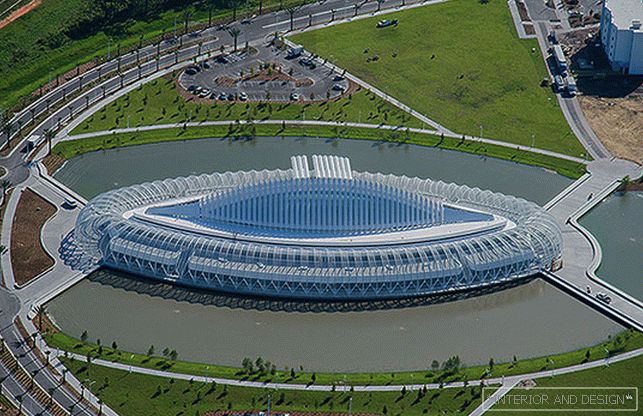 Polytechnic University, campus center for innovation, science and technology building, Florida, USA. 2014. In collaboration with Festina Lente LLC.
Polytechnic University, campus center for innovation, science and technology building, Florida, USA. 2014. In collaboration with Festina Lente LLC. 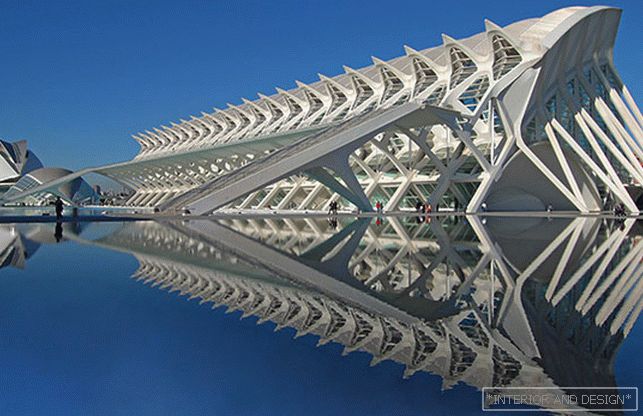 Museum of Science and Technology. City of Arts and Sciences (City of Arts and Sciences) in Valencia. An architectural complex of five structures on the dried bottom of the Turia River. 1991-2005.
Museum of Science and Technology. City of Arts and Sciences (City of Arts and Sciences) in Valencia. An architectural complex of five structures on the dried bottom of the Turia River. 1991-2005. 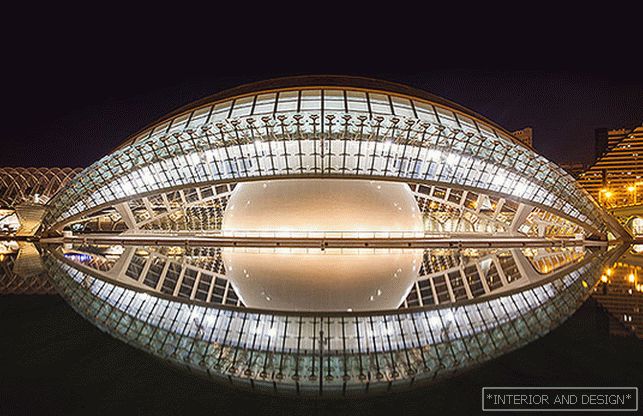 L'Hemisfèric - IMAX cinema, planetarium, laser theater. City of Arts and Sciences (City of Arts and Sciences) in Valencia. 1991-2005.
L'Hemisfèric - IMAX cinema, planetarium, laser theater. City of Arts and Sciences (City of Arts and Sciences) in Valencia. 1991-2005. 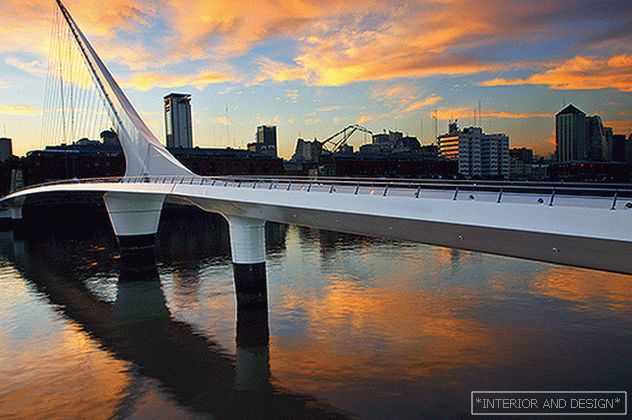 Woman's bridge Puente de la Mujer, Buenos Aires, Argentina. 1998–2001.
Woman's bridge Puente de la Mujer, Buenos Aires, Argentina. 1998–2001. 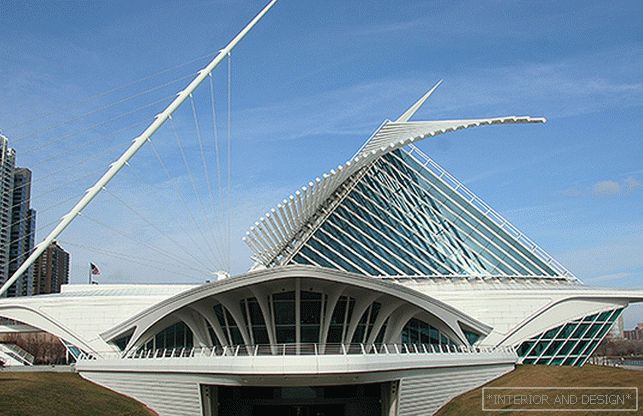 Milwaukee Art Museum, USA. 1994–2001.
Milwaukee Art Museum, USA. 1994–2001. 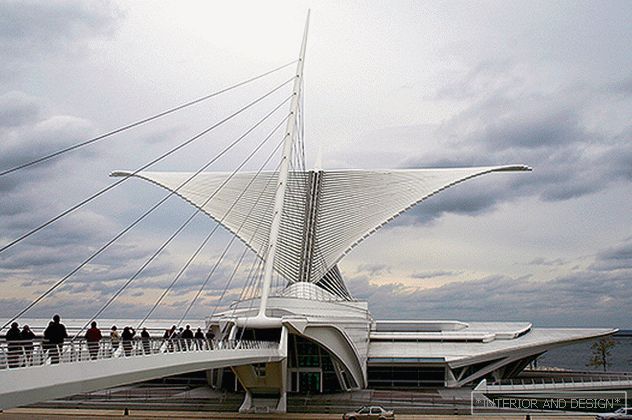 Pavilion Quadracci, an extension to the Museum of Art, Milwaukee. 2001.
Pavilion Quadracci, an extension to the Museum of Art, Milwaukee. 2001. 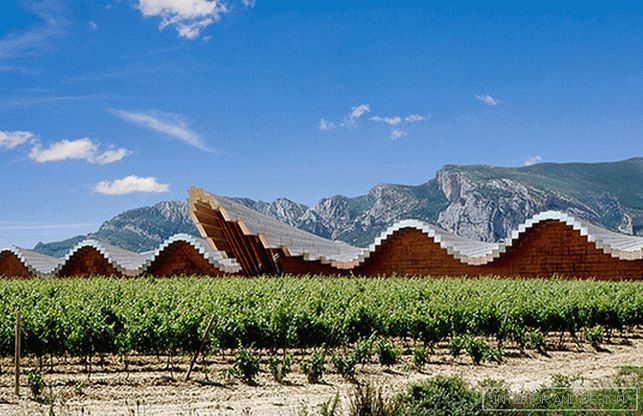 Botega Isios (Ysios). Winery at the foot of the Sierra de Cantabria. Spain. 2010
Botega Isios (Ysios). Winery at the foot of the Sierra de Cantabria. Spain. 2010 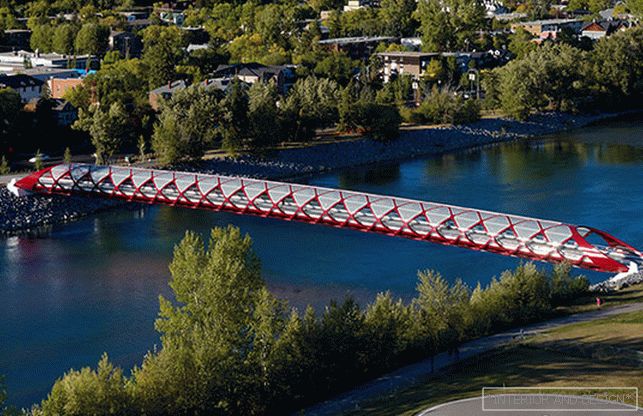 Bridge of Peace. Calgary, Canada. 2012
Bridge of Peace. Calgary, Canada. 2012 

